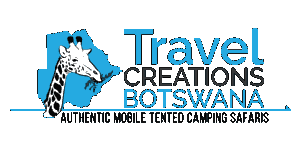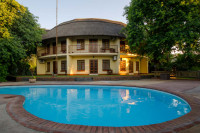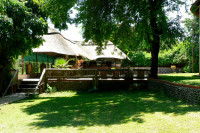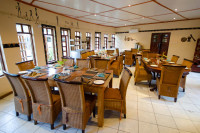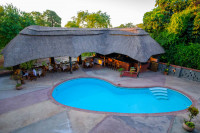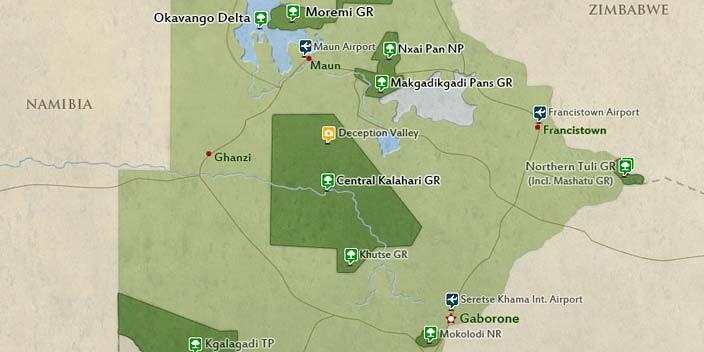
$2,420 pp (USD)
2 travelers on Start dateArrival
Arrival

Day 1
Okavango delta NG33
Okavango delta NG33
Today our safari start with a pick up from the lodge and road transfer you to the mokoro station in a 4WD open sided safari vehicle and it is approximately two hour drive.
Upon arrival you will meet your qualified guide provided by the community, They will pole you along the water ways and they will share with you their local heritage and knowledge while looking for wildlife and bird species which inhabit the Delta. Our activities include a game walk where you can enjoy awesome sightings while your camp is being made and upon arrival you will find lunch ready. After lunch you may enjoy a siesta moment in camp to avoid the mid-day heat. Your accommodation will be a 6m x 3m Sahara tent with and comfortable bedding.
- Main Destination:
- Okavango Delta
- Accommodation:
- Mid-range camping
- Meals & Drinks:

Day 2-3
Kwai concession area
Kwai concession area
Today, our guide will take us from our hotel to Khwai. This area is of diverse beauty. It covers riverine woodland, open floodplains, mopane woodland, and savannah. This diverse landscape attracts a huge variety of wildlife, such as buffalo, wild dog, elephant, lion, zebra, leopard, kudu, and lechwe sable, just to name a few.
The Khwai River is a big draw for game in the Dry season as the only water source for miles around. Wildlife is drawn to the water from the drier areas, and even in the Green season, this area usually produces excellent wildlife sightings.
- Main Destination:
- Khwai Concession (Okavango Delta)
- Accommodation:
- Mid-range camping
- Meals & Drinks:

Day 4-5
Savuti Chobe National Park
Savuti Chobe National Park
Chobe National Park Savuti, with its diverse and impressive landscapes, will be our next destination. In search of wildlife, we visit the drier region of Savuti, where bull elephants populate the lowlands. The Savuti region is known for its dynamic ecosystem, which can change significantly over time. The presence of waterholes, dry riverbeds and swamps attracts a diverse range of animals, making any game-viewing trip an exciting and unpredictable adventure. Camping is in private designated areas with bush toilets.
- Main Destination:
- Savuti (Chobe NP)
- Accommodation:
- Mid-range camping
- Meals & Drinks:

Day 6
Chobe river front
Chobe river front
The Chobe Riverfront (or Serondela area) forms the northern boundary of Chobe National Park. It has lush plains and dense forests, as well as the renowned Chobe River, which attracts huge numbers of elephants, buffalo, general wildlife, lions, and other predators.
The park's habitats range from floodplains, mopane woodland, baobab trees, and acacia woodlands to verdant flood grasslands and thickets bordering the Chobe River. The most remarkable feature of Chobe National Park is its huge concentration of elephants. This park supports the largest surviving elephant population in the world, currently estimated to exceed 120,000. This population is dispersed throughout much of northern Botswana, as well as parts of northwestern Zimbabwe. The Chobe elephants are migratory, making seasonal movements of up to 200 kilometres in a circuit from the Chobe and Linyanti Rivers, where they concentrate in the Dry season.
- Main Destination:
- Chobe Riverfront (Chobe NP)
- Accommodation:
- Water Lily Lodge
- Meals & Drinks:

Day 7
Chobe river front
Chobe river front
Our safari ends today after our early morning game drive.
- Main Destination:
- Kasane (Town)
- Accommodation:
- No accommodation (End of tour)
- Meals & Drinks:

